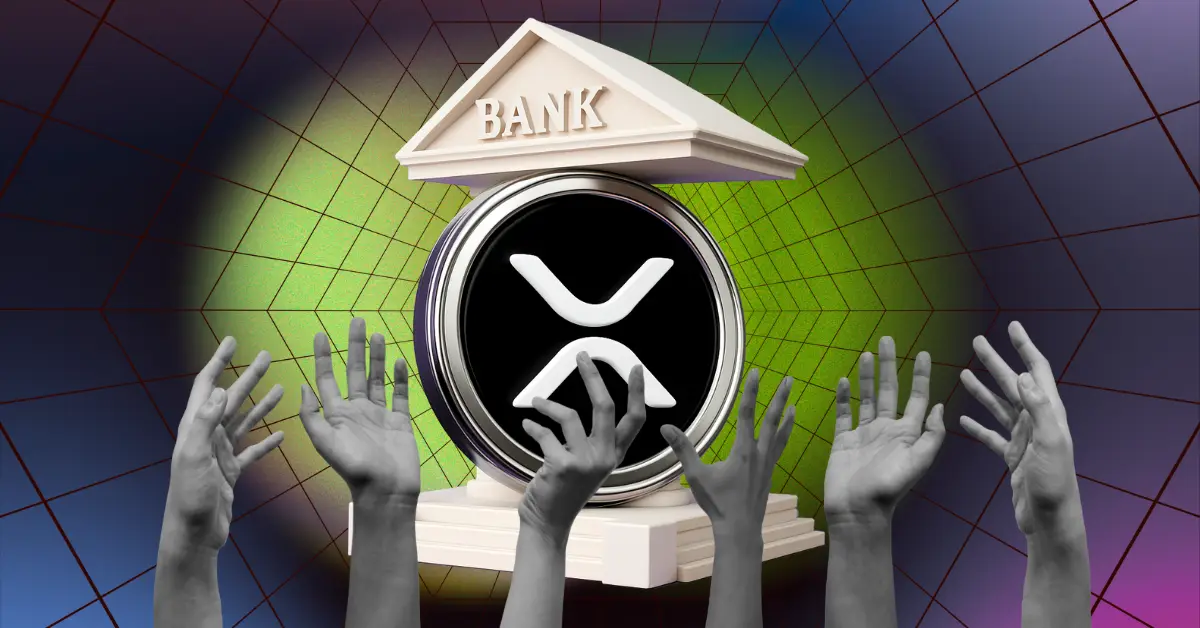
The U.S. banking system might be going through one of its biggest changes in years without much public attention. The EGRPRA review (Economic Growth and Regulatory Paperwork Reduction Act), which takes place only once every decade, is now underway and will continue until July 2026.
This review allows top financial regulators, the OCC, Federal Reserve, and FDIC, to update banking laws without needing Congress to act. It’s a rare opportunity to redefine what a bank is and how financial services work in a digital world.
At the center of this potential shift is Ripple. The company has applied for a national trust bank charter, which would allow it to operate in a completely different way from traditional banks.
Instead of taking deposits or offering loans, Ripple’s trust would:
Legal expert Mr. Man referred to this review as a “legal bypass,” meaning regulators can make significant changes to financial rules without the usual political process.
Mr. Man points to Section 12 CFR § 262.3, which governs how the Fed processes such applications. Typically, once Ripple’s application is made public, there’s a 90-day window for review.
However, the Fed can bypass this entirely if it deems the application critical to system stability or liquidity. That clause could give Ripple an express lane to approval if its services are seen as essential for the evolving tokenized economy.
Mr. Man adds that Ripple’s success would mark a turning point in redefining legal personhood in the financial system, from paper charters to programmable code.
According to Federal Reserve regulations under 12 CFR § 262.3, once Ripple’s application is made public, a formal 90-day window opens for review and public comment. During this time, the Fed can approve, reject, or require the application to be resubmitted.
However, there’s a lesser-known clause that gives the Board the power to waive these procedures entirely if “immediate action is necessary to prevent failure” or if there is an emergency.
This clause gives regulators the flexibility to fast-track Ripple’s approval if they consider it critical to liquidity, interoperability, or systemic financial stability.
By the time the EGRPRA review ends in 2026, the U.S. may have quietly created space for a new type of financial institution, programmable, blockchain-based entities that operate under traditional regulation but with entirely digital tools.
Ripple’s trust bank could be one of the first, handling smart contracts and stablecoins just like banks handle checks and wires today.
This shift won’t come with headlines or big announcements. But analysts believe it could mark the beginning of a financial system where code, tokens, and blockchains operate side by side with traditional finance all legally approved under U.S. law.
Ripple may just be the first to cross that line.
The EGRPRA review is a rare, decade-long process (ending July 2026) allowing top U.S. financial regulators to update banking laws without Congress, potentially reshaping the U.S. financial system for digital assets.
Ripple’s application aims to establish a new type of financial institution that manages stablecoin reserves and settles tokenized assets, potentially redefining banking in a digital world without traditional deposits or loans.
By 2026, the EGRPRA review could quietly create a legal framework for new, programmable, blockchain-based financial institutions in the U.S., allowing code, tokens, and blockchains to operate alongside traditional finance.
CoinPedia has been delivering accurate and timely cryptocurrency and blockchain updates since 2017. All content is created by our expert panel of analysts and journalists, following strict Editorial Guidelines based on E-E-A-T (Experience, Expertise, Authoritativeness, Trustworthiness). Every article is fact-checked against reputable sources to ensure accuracy, transparency, and reliability. Our review policy guarantees unbiased evaluations when recommending exchanges, platforms, or tools. We strive to provide timely updates about everything crypto & blockchain, right from startups to industry majors.
All opinions and insights shared represent the author's own views on current market conditions. Please do your own research before making investment decisions. Neither the writer nor the publication assumes responsibility for your financial choices.
Sponsored content and affiliate links may appear on our site. Advertisements are marked clearly, and our editorial content remains entirely independent from our ad partners.
Crypto markets may be quietly turning a corner, according to analyst Ran Neuner, but he…
The $30 million defamation lawsuit filed by crypto entrepreneur Jake Claver against influencer Zach Rector…
Vitalik Buterin has pushed back against the direction of much of the crypto industry, saying…
Bitcoin price is continuing to trade below a major resistance zone, showing signs of hesitation…
Crypto entrepreneur Jake Claver has filed a $30 million defamation lawsuit against XRP influencer Zach…
The crypto market opened 2026 with a strong bullish push, lifting Solana (SOL) above $143.…